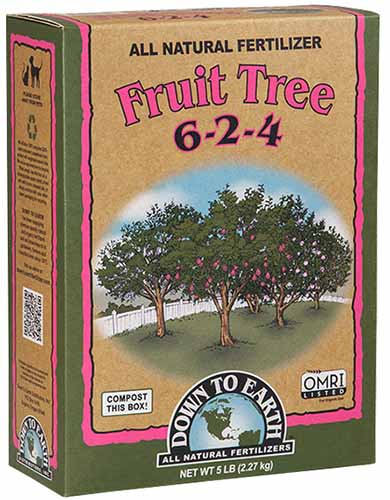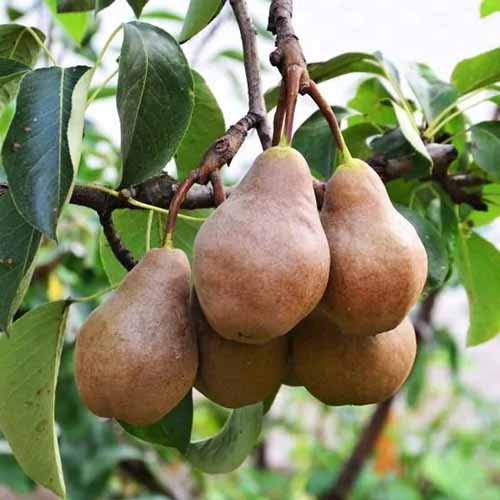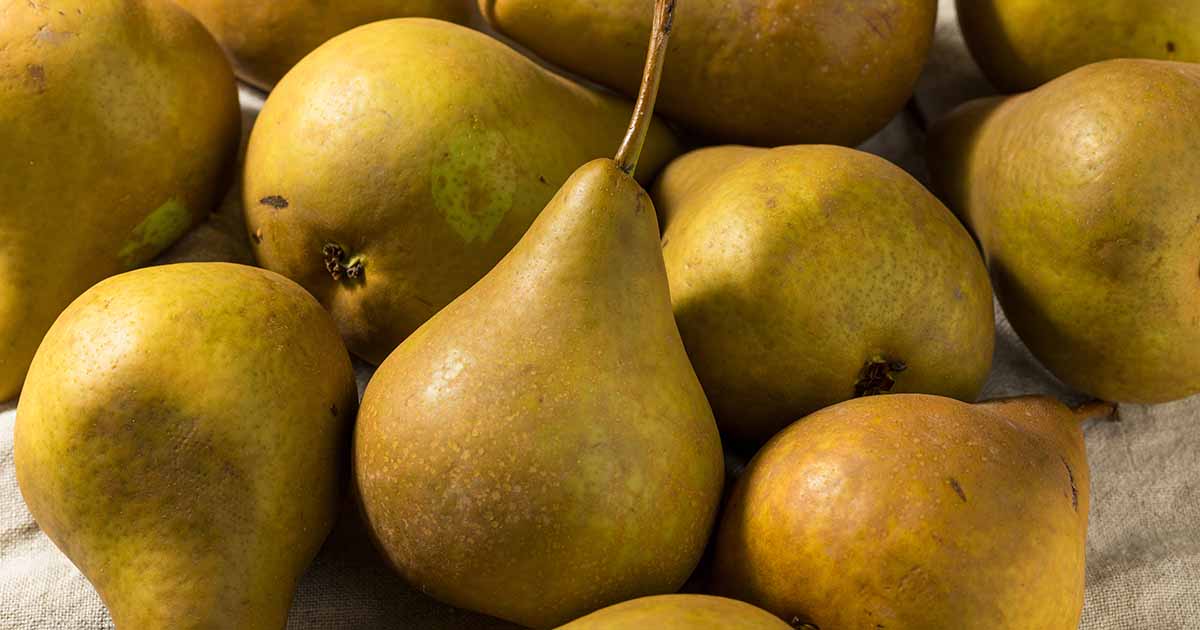
Pyrus communis ‘Bosc’
If you picture a classic still life painting featuring fruit like pears and grapes, I’ll bet there’s a ‘Bosc’ in there.
The shape and color of the fruit, with its elongated neck, long stem, and rounded base enrobed in a cinnamon-brown skin, are the stuff of fine art.
If a meal begins with the eyes, as the saying goes, this fruit certainly starts the juices flowing.
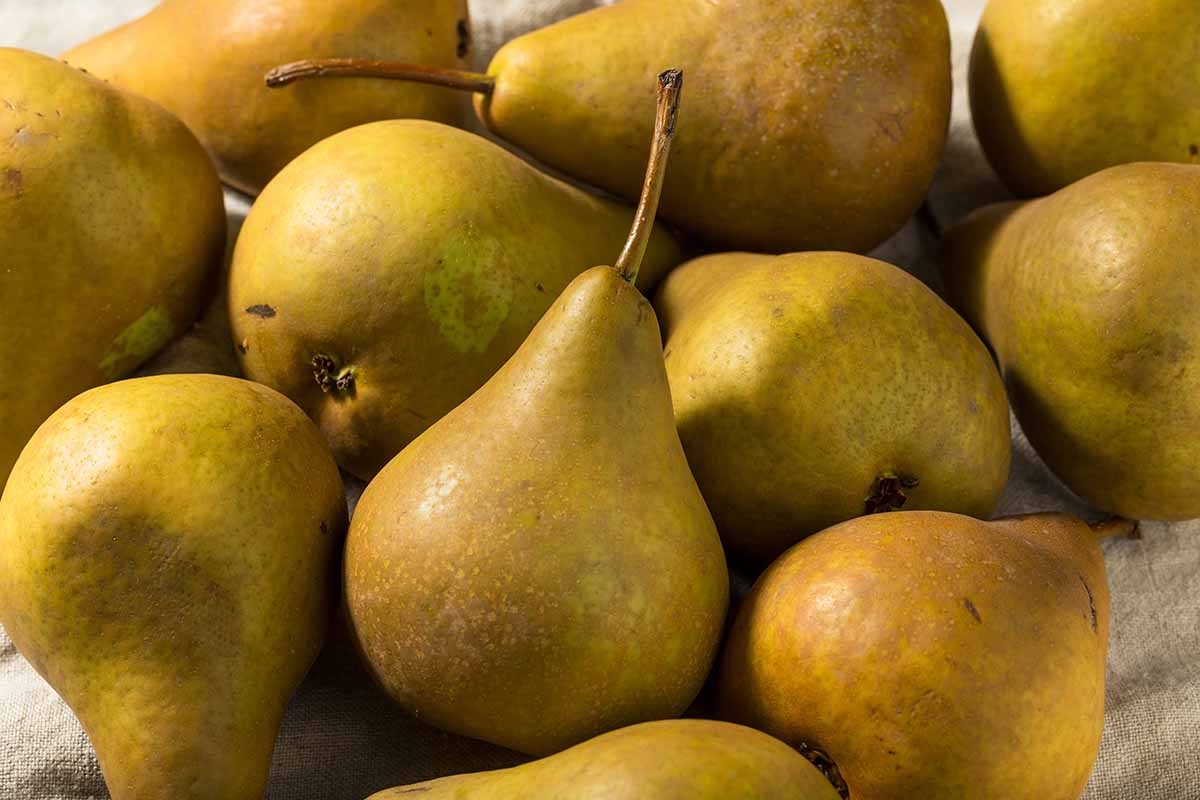
We link to vendors to help you find relevant products. If you buy from one of our links, we may earn a commission.
‘Bosc’ pears are a feast for the eyes, but their appeal is more than skin deep. They have honey-sweet flesh with hints of vanilla and spice that’s artful on the palate.
This “aristocrat of pears” stands apart from other cultivars because of its firm, crisp, russetted flesh.
‘Bosc’ is a winter pear, which means it ripens later in the season and keeps better in storage than summer pear varieties.
I realize I’m waxing poetic here, but these fruits are truly sensual.
From the visual of cradling one in your hand, lifting it to your nose to inhale, and then crunching into it over the sink, the juice running down your chin, enjoying a ‘Bosc’ is a feast for all the senses.
Okay, fine. I’ll stop raving and start getting into the real work of planting and growing these trees. Here’s what we’re going to talk about:
‘Bosc’ has been around for a long, long time. It’s an heirloom cultivar that came to the US from Europe. Before we talk about how to care for this tree, let’s explore its past a bit.
Cultivation and History
‘Bosc’ is a cultivar of the European or common pear, Pyrus communis.
The truth of the matter is that there is no real consensus about where ‘Bosc,’ pronounced “BAHsk,” came from.
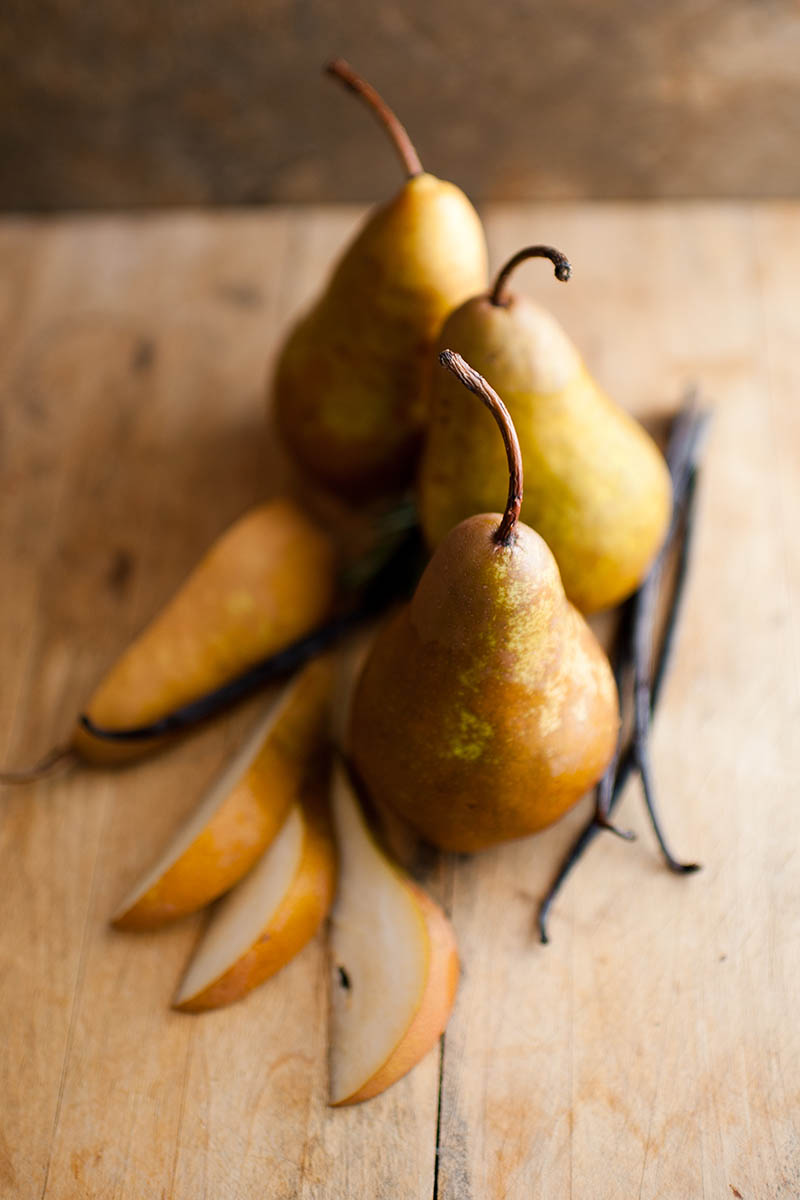
It possibly originated in Belgium – or maybe France. The cultivar was definitely in cultivation in the early 1800s, as in 1807, chemist and botanist Jean-Baptiste van Mons started a ‘Bosc’ tree from seed. And in 1830, a farmer stumbled across a seedling in Appermont, France.
Told you we weren’t sure.
We do know for sure that these pears were named ‘Bosc’ after Louis Augustin Guillaume Bosc, who directed the National Museum of Natural History in Paris from 1825 to 1828.
This cultivar is sometimes known as ‘Buerre Bosc’ (butter) or ‘Calabasse Bosc’ (gourd-shaped Bosc). It’s also called ‘Kaiser Alexander’ or just ‘Kaiser.’
Things get a bit clearer when it comes to their history in North America. ‘Bosc’ was brought from Europe and planted in eastern commercial orchards in 1832 or 1833.
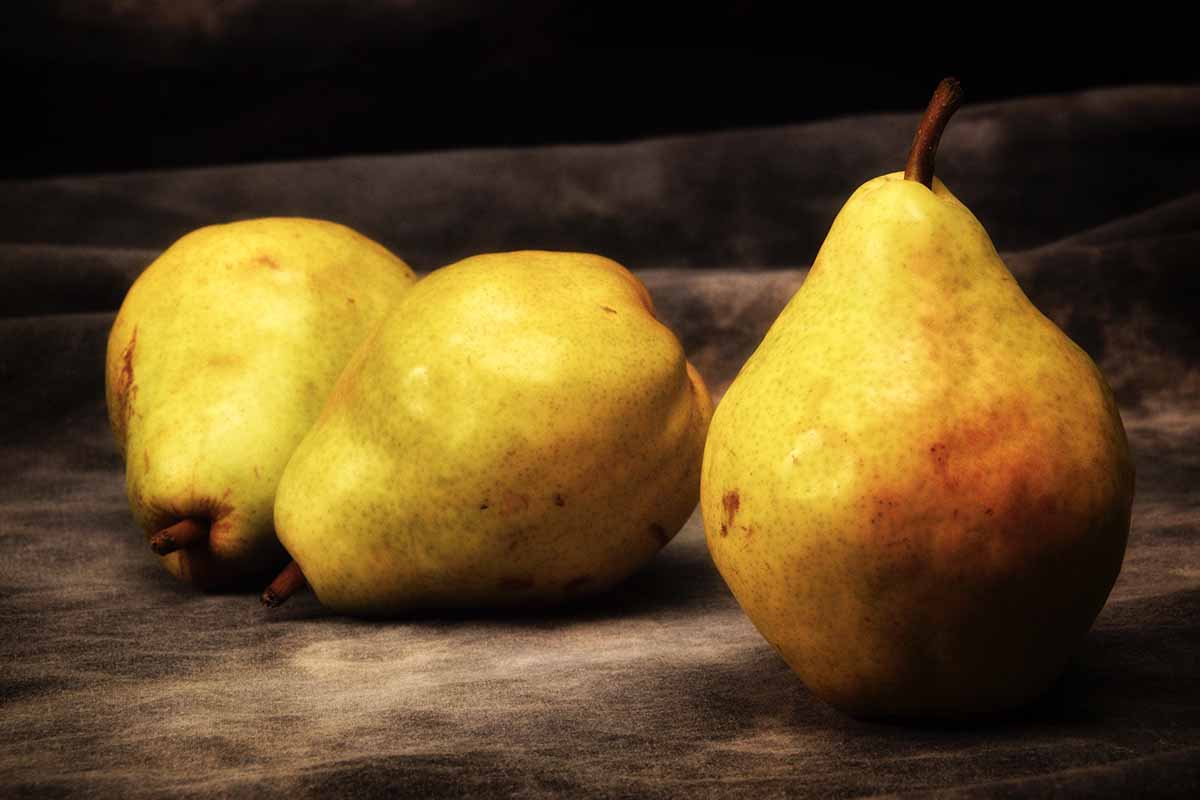
They later came to the Pacific Northwest, which is where most ‘Bosc’ pears are grown commercially today.
The dark brown or copper coloration and slightly rough texture that develops on the skin is known as “russeting.” Russeting happens when suberin, an insulating molecule in plant cells, builds up in the skin.
Many people love the russeting on the skin of this cultivar, which is can be influenced by the growing environment.
Moist spring weather from rain or humidity, leads to heavy russeting, which is one of the reasons pears from the Rogue River Valley in Oregon are so coveted.
The area receives lots of moisture and cold enough temperatures that the fruits produce suberin as they develop. Of those pears grown in the valley, the ‘Bosc’ is the most economically important.
The trees are self-pollinating, but having a friend will improve production. Plant a ‘Bartlett’ pear or an ‘Anjou’ nearby and reap the rewards.
The trees grow up to 20 feet tall and wide when mature. They are suitable for cultivation in USDA Hardiness Zones 4 to 8.
‘Bosc’ Pear Propagation
Pears are generally propagated through grafting, and a sapling you buy from the garden center or plant nursery will almost certainly be grafted.
You can start them by seed, even from seed that you find inside the fruit you buy at the grocery store, but they won’t grow true. The seedling that emerges won’t be a true ‘Bosc.’
For that reason, we won’t talk about propagating via seed. Instead, we’ll focus on the two methods most available to home growers for propagating pears: cuttings and grafting, as well as the easiest method of all, purchasing a sapling from a plant nursery or garden center.
From Cuttings
When you propagate from cuttings you create an exact clone of the parent tree.
If you know someone with a ‘Bosc’ tree, whether that’s a generous neighbor or maybe a farmer willing to let you take a few cuttings, head out in spring to take semi-hardwood or softwood cuttings.
You’ll need to take several six- to eight-inch cuttings using clean pruning shears. Cut the ends at a 45-degree angle and place them in nursery pots filled with potting medium.
Once the cuttings develop roots, you can plant them outdoors.
To learn all the details about how to propagate pears from cuttings, read our comprehensive guide.
From Grafted Rootstock
Commercial pear trees are grafted or budded. Budding is a challenge that new growers are better off avoiding until they have more experience with propagation.
Grafting is an excellent way to grow a productive, healthy tree. You need both a rootstock and a ‘Bosc’ scion to complete the process.
When grafting, you take a bud chip from a parent ‘Bosc’ tree and you attach it to a rootstock base. The joint, or graft, between the two heals and voila! You have a productive, easy-to-manage tree that produces phenomenal fruits.
Generally, newbies buy rootstock and obtain a scion from an available mature tree or it is possible to purchase scions. You want to collect a 16-inch-long scion in the late winter or early spring from a healthy ‘Bosc’ specimen.
If you can’t graft right away, wrap the end in a moist paper towel, place the end in a plastic bag, and put it in the fridge until you’re ready.
Wait until the pear and apple trees in your neighborhood start budding. That’s when you can start the grafting process.
To do this, you will join the scion to the rootstock using a whip and tongue (bench) or a cleft graft.
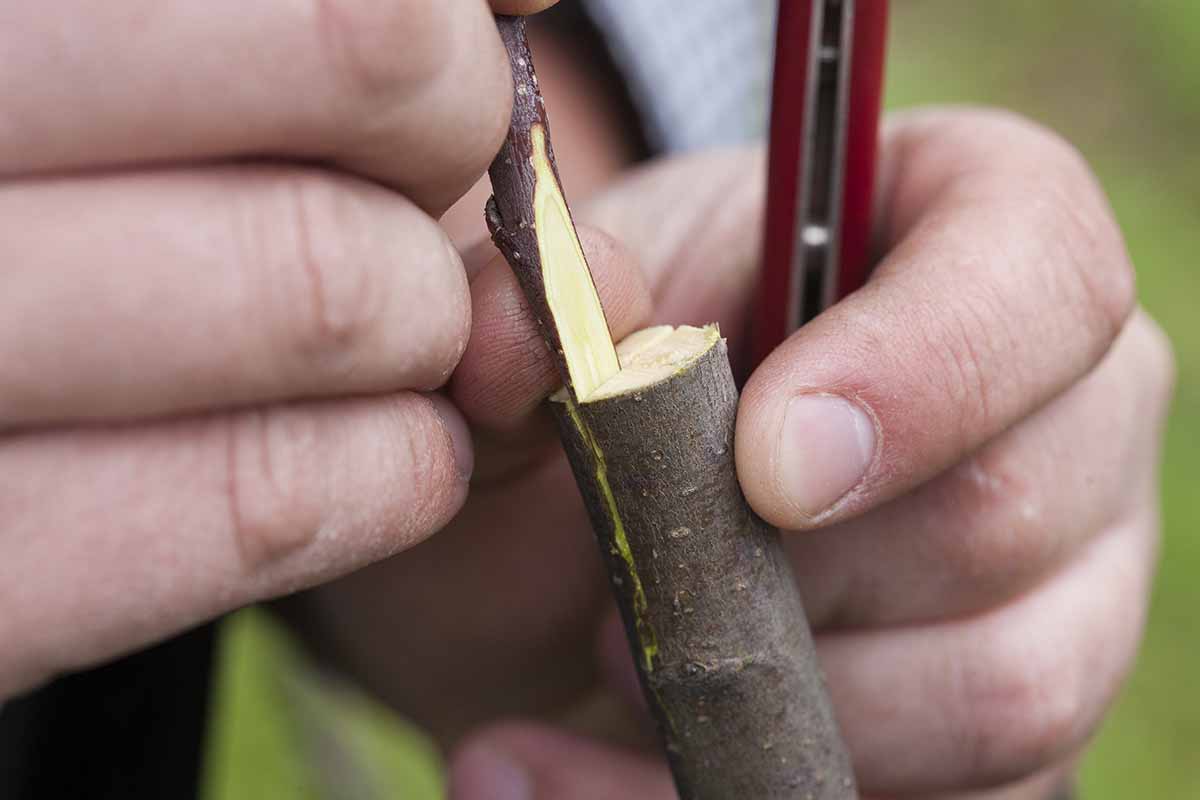
You’ll need grafting tools for cutting the shapes, a hammer (for cleft grafts), tape or grafting compound. The goal is to join the cambium layer of the top and bottom parts. The cambium is the green tissue underneath the bark.
You’ll make cuts into the rootstock and insert the scion, then seal it with tape or compound.
Whip and tongue grafts are made at an angle with a sharp peak in the middle. It sort of looks like a cursive, uppercase N. The scion is made in the opposite shape with a sharp inset in the middle. The inset and the peak should join up like puzzle pieces.
With a cleft graft, you use a hammer or mallet to tap a grafting tool into the center of the trunk of the rootstock. Then, you cut the scion base into a v shape, exposing the cambium on two sides. Insert the scion into the cut that you made in the rootstock.
You’ll then keep the plant in full sun outdoors until the graft heals, assuming your rootstock isn’t already in the ground. If it isn’t already planted, you’ll put the plant in the ground with the graft union just above the ground once the union has sealed up completely.
Transplanting
Fruit trees are best planted in the fall. This gives them time to become established and settle in before they start to develop new growth.
If you absolutely can’t plant in fall for some reason, you can also transplant in the spring, but you’ll need to be a bit more protective of your new tree as it becomes established.
Before you plant, do a soil test. The soil should have a pH between 6.0 and 7.0 and you should apply suitable amendments to fix any nutrient deficiencies revealed by the soil test.
Once that’s all done, it’s time to dig your holes. Dwarf trees should be ten feet from any other plants or buildings. Standard-sized trees should be 15 feet away from anything else.
Dig the hole twice the width and the same depth as the container the young tree is currently growing in.
Gently remove the sapling and loosen up the roots, spread them out in the hole, setting it at the same height it was growing in the container with the graft union at least an inch above the soil line. Backfill with soil around the roots.
Water well and fill in with more soil if needed. You don’t want moisture to puddle around the trunk, so slope away from it.
How to Grow ‘Bosc’ Pears
These trees are pretty adaptable when it comes to the soil type. Loose, rich, loamy soil is ideal, but they’ll tolerate a little clay, silt, or sand. Just avoid planting in an area with poor drainage.
If you’ve planted your tree in fall, Mother Nature will likely take care of the moisture situation. If the soil ever dries out, add water. Otherwise, you can leave the tree to do its thing over the winter months.
Trees transplanted in spring need a bit more attention. Keep a close eye on the soil moisture, if the top inch of soil dries out, you’ll need to irrigate.
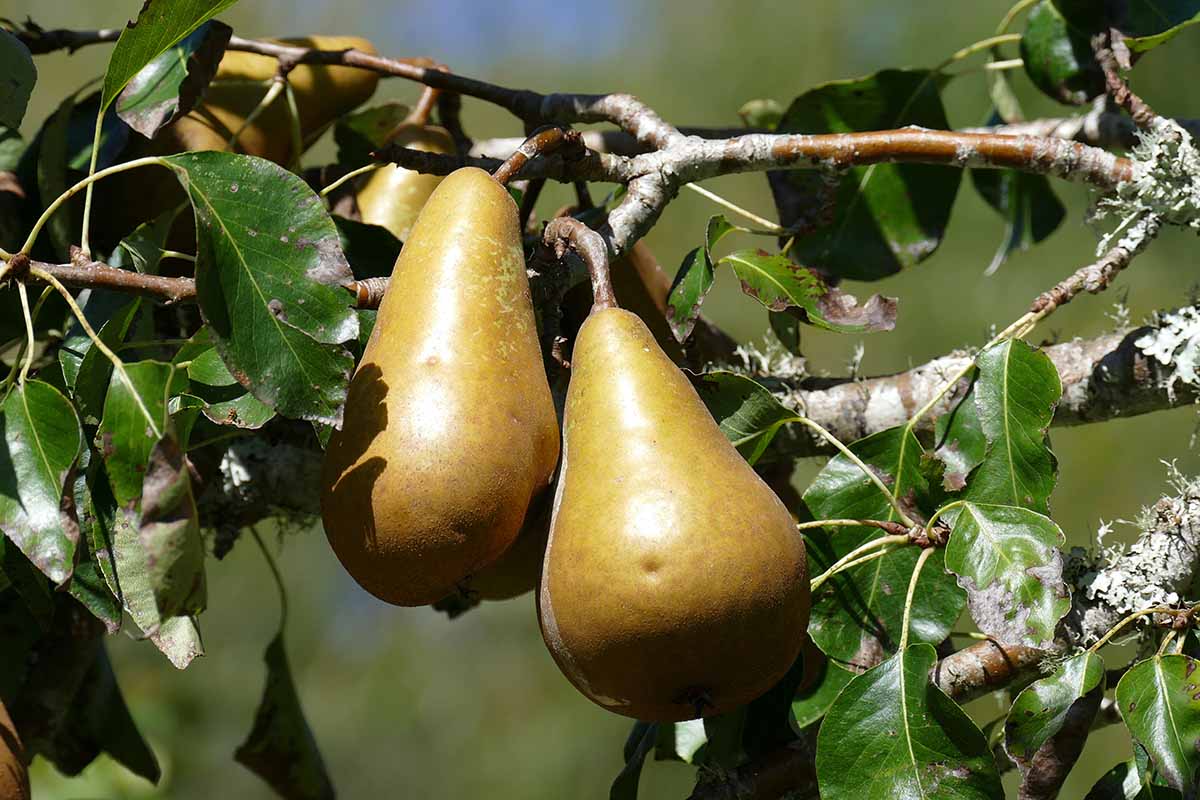
Once the tree is established, you probably won’t need to add moisture unless the top three or four inches of soil dry out.
We have an entire guide focused on watering pears if you’d like more details.
‘Bosc’ trees need full sun, though you can get away with slightly less. As long as they receive at least six hours of sunshine per day, the tree should produce ample fruit.
Keep an eye on any surrounding trees to make sure they don’t overgrow, and start shading your pear.
I can’t tell you how often it happens that someone plants a tree and a nearby tree continues to grow and shade out the pear. If that happens, you’ll need to prune the offending tree to improve light exposure.
Depending on your soil composition, you don’t need to feed ‘Bosc’ trees. It’s always wise to do a soil test and determine what you’re working with.
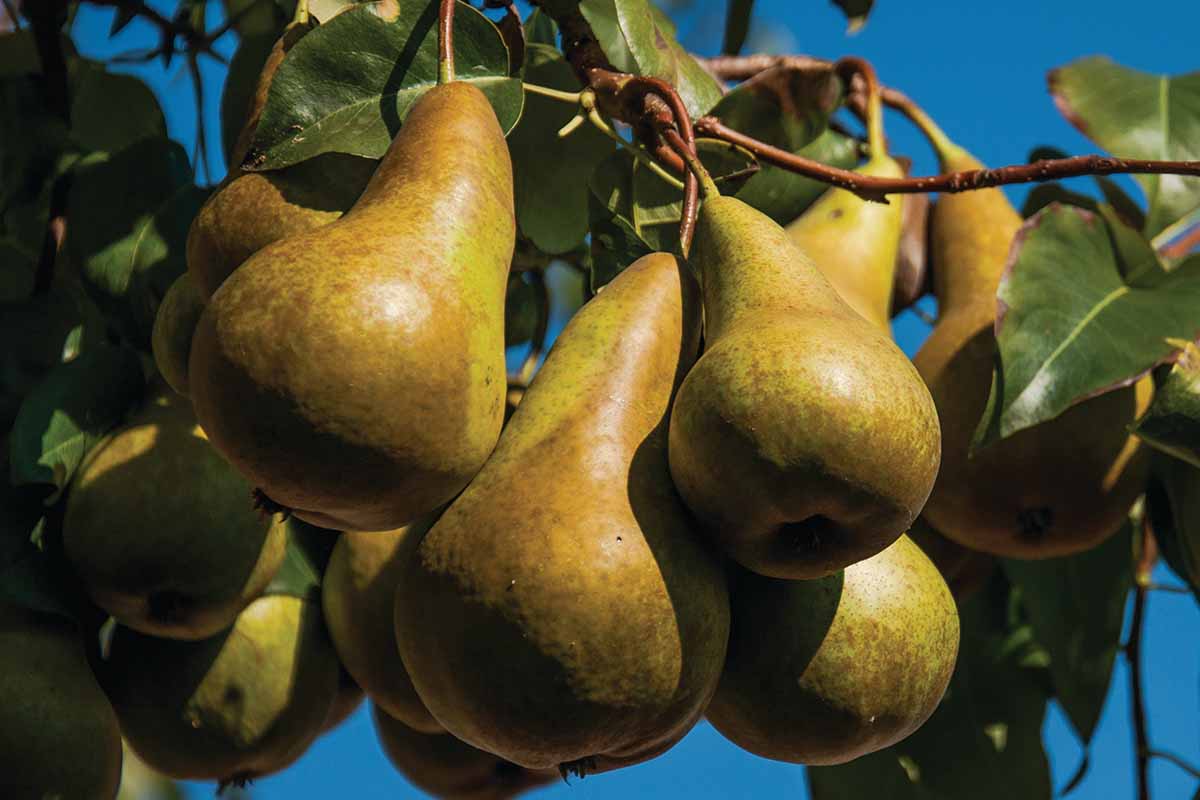
Assuming your soil is not completely depleted, you can skip feeding. However, if a test shows specific nutrient deficiencies, feed accordingly.
Or, if you start to notice that the leaves seem paler than they should be, start feeding. Fertilizer is best applied right before the buds on the tree begin to swell in the early spring.
Use an all-purpose food or pick something formulated for fruit trees.
Down to Earth’s Fruit Tree Mix is an excellent option, which has an N-P-K ratio of 6-2-4 and is made of feather, fish bone, alfalfa, and kelp meal.
Arbico Organics has five-, 15-, and 25-pound biodegradable boxes.
Apply your chosen fertilizer around the roots of the tree in the spring after flowering.
Again, I suggest you test the soil before feeding because if you add too much nitrogen, the tree will grow too rapidly and this can encourage fireblight.
’Bosc’ are partially self-fertile. That means they will still fruit, but harvests will be improved if there is a pollinator nearby. ‘Bartlett,’ ‘Comice,’ ‘D’Anjou,’ or ‘Seckel’ all bloom within the same period so any of those will make a suitable companion.
Learn about pear pollination in our guide.
Growing Tips
- Grow in a full sun location.
- Plant in loose, rich soil.
- Carefully maintain soil moisture for young plants.
- Don’t feed unless a soil test reveals a deficiency.
Pruning and Maintenance
Pruning is absolutely required if you want the best fruiting, no exceptions. ‘Bosc’ trees can be a little wild in their growth.
They send out branches willy-nilly, corkscrewing, angling, and zig-zagging wherever they want to reach the sun.
All pear trees need regular pruning to produce well, but especially ‘Bosc.’
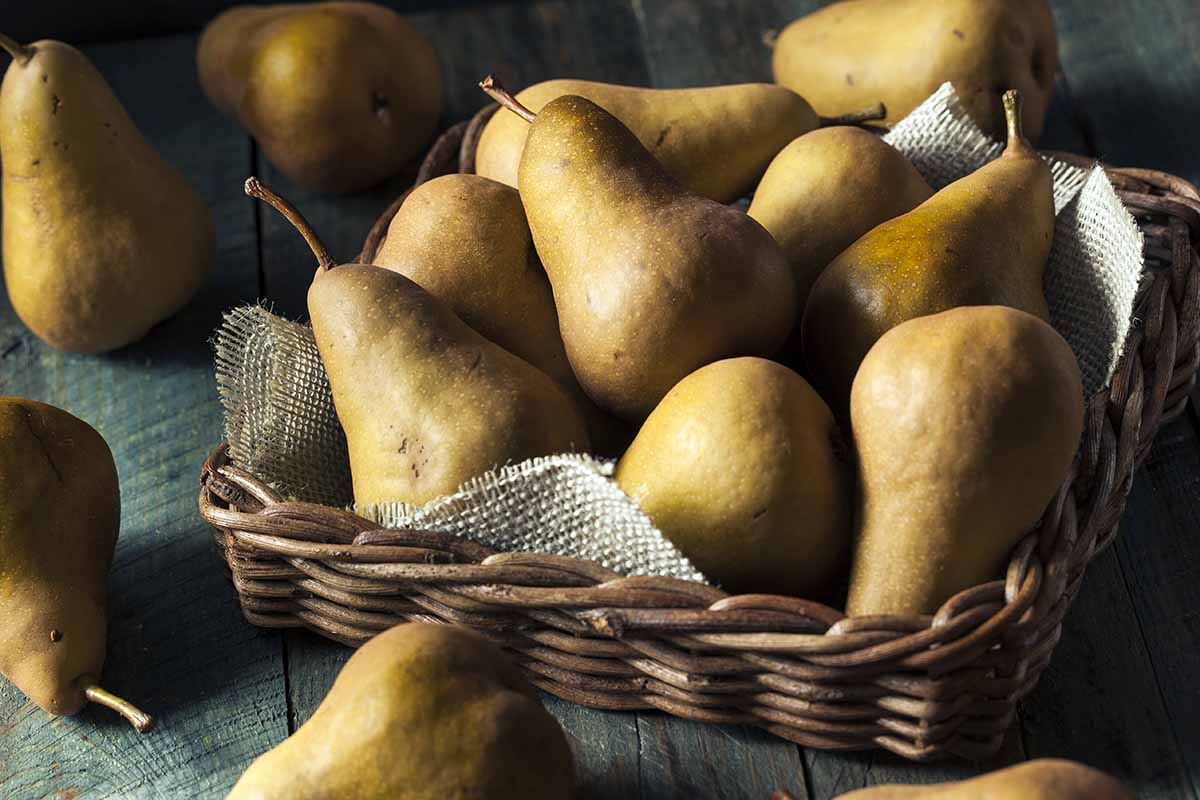
If you provide at least eight hours of sun, the branches are less likely to grow in odd shapes, but you’ll have a lot of them.
Branches that are growing too close together or rubbing against each other can make the tree susceptible to pests and disease pathogens.
Proper pruning opens up the canopy for good air circulation and allows more sun to penetrate the canopy. It also limits the number of fruit-producing branches, which results in stronger, healthier branches that produce larger fruits.
‘Bosc’ trees should be pruned in the early spring. Visit our guide to learn all the ins and outs of pruning pears.
You can encourage larger fruits by thinning the young fruits as they start to develop. Remove any fruits that are touching or are too close together.
Where to Buy ‘Bosc’ Pear Trees
This cultivar is popular, and you’ll be able to find it pretty easily. For example, Nature Hills carries specimens in #5 containers.
Or, if you want a few other size options, visit Fast Growing Trees to find a three to four, four- to five, or six-to-seven-foot tree.
Plant a ‘Bartlett,’ ‘Comice,’ ‘D’Anjou,’ or ‘Seckel’ within 100 feet or so for pollination. Fast Growing Trees also carries ‘Bartlett’ in the same sizes.
Managing Pests and Disease
While it isn’t a disease, be mindful of frosts. ‘Bosc’ blooms a few days before apples do, which makes them even more susceptible to late blossom-killing frosts.
Remember that if a late frost kills the flowers on the tree, it won’t produce fruits.
Insects
Aphids, codling moths, and scale are all common pear pests. Aphids and scale are relatively harmless unless they occur in large numbers.
They generally cause a bit of yellowing of the foliage or reduced growth.

Codling moths, on the other hand, truly suck. The moths lay eggs that hatch into larvae that tunnel their way into the fruits, leaving a rotten trail as they go.
Pears seem to be less interesting to pests than apples, but if they don’t have apples, they’ll certainly visit your ‘Bosc’ trees.
You can bag fruits to protect them or spray in the spring with horticultural oil to smother the eggs. Your local extension or university should tip you off on the right time to spray.
Monterey’s horticultural oil is available at Arbico Organics in quart ready-to-use or ready-to-spray, or pint, quart, or gallon concentrate.
Less often, you might also find pear psylla attacking your plants.
Disease
Fireblight can be a devastating disease for all members of the Rosaceae family. The disease is caused by the bacteria Erwinia amylovora, and there is no cure.
It causes dead branches with brown, crisp leaves and peeling bark. Eventually, it can kill an entire tree. You might also have cankers that may or may not ooze.
Pruning, avoiding excess moisture, and watering at the soil level, and taking care not to overfertilize with nitrogen will help prevent fireblight.
Learn more tips about how to deal with fireblight in pears in our guide.
While there are resistant cultivars available, ‘Bosc’ isn’t one of them.
Harvesting
‘Bosc’ starts producing fruit when the tree is still young, sometimes as early as three years old. In late summer to early fall, start checking out the fruits.
Some types of pears can be tested for ripeness by their texture. But ‘Bosc’ have firm flesh when they’re ripe, so you can’t rely on that.
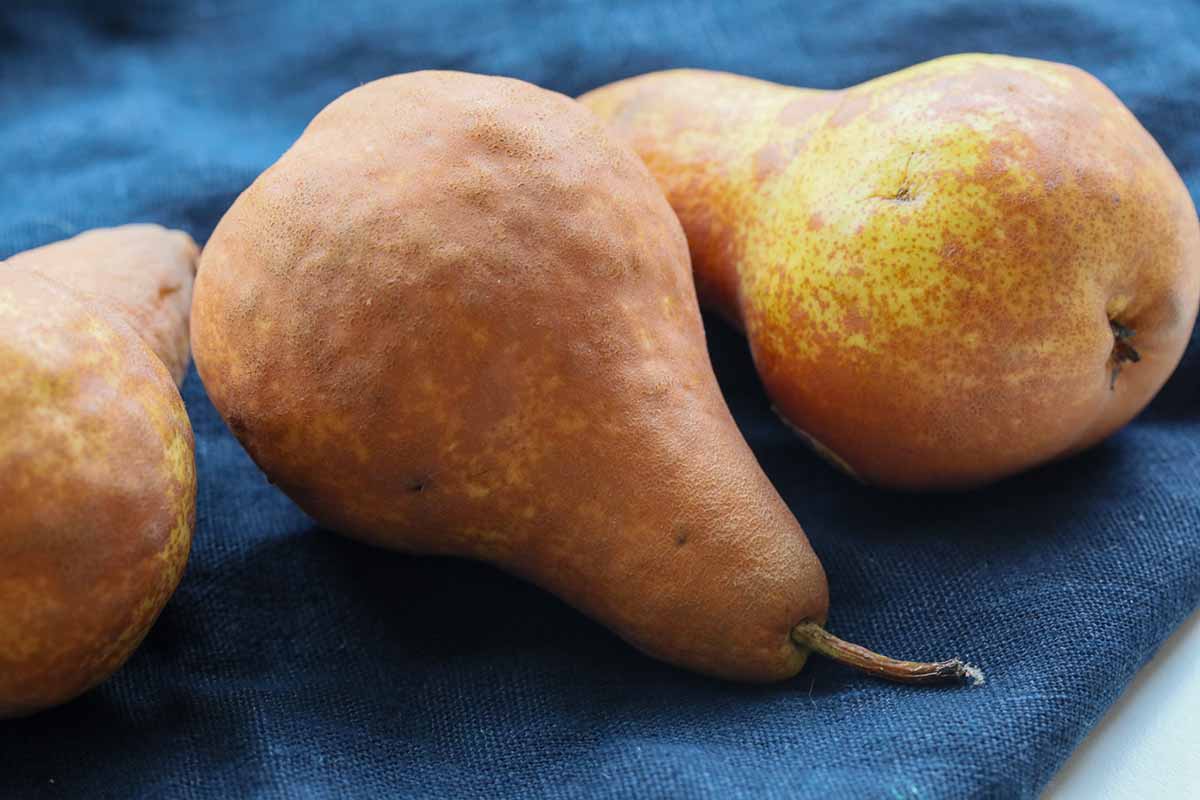
Instead, you’ll need to gently press into the neck of the fruit near the stem to see if there is a small amount of give. It won’t be a lot. You might also see some light wrinkling of the skin at the base of the stem.
You can also look for the faint tone of green underneath the russeting to turn yellow, but this isn’t a reliable indicator.
Pressing on the neck or plucking one and tasting it are the only ways to be certain that your fruit is ready for harvest.
Visit our guide to harvesting pears for more information.
Preserving
Dried pears are fantastic and ‘Bosc’ does especially well dehydrated.
To do this, slice up your fruits, dip them in lemon juice to prevent browning, and lay them in single layers on a dehydrator tray.
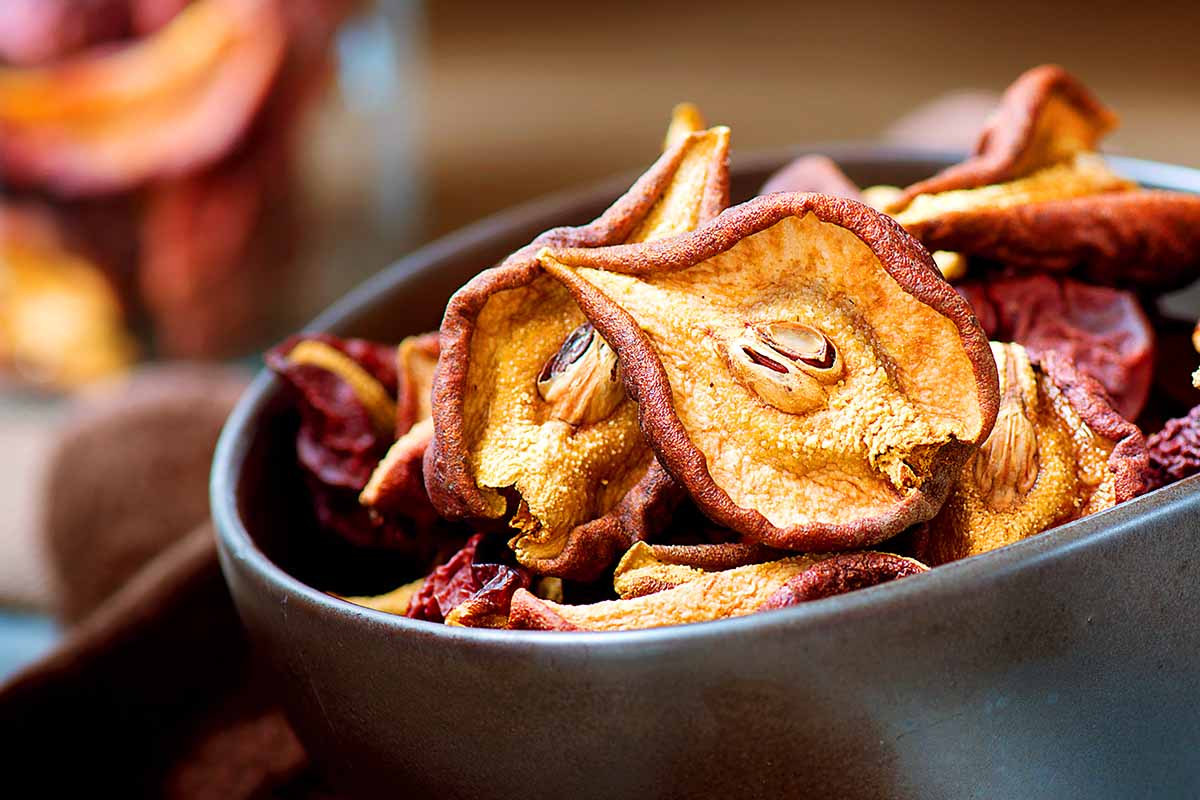
You can also dry them in the oven on the lowest setting, though you might end up with pear chips rather than dried slices, depending on the temperature you use.
‘Bosc’ can also be stored unwashed and whole in the refrigerator for up to five months. They’re extremely long-storing.
If you’d like to freeze the fruits, wash and chop them up and freeze them in a single layer on a sheet. Once they’re frozen solid, place them in a sealable bag or container.
Canned pears are a classic choice and you can also make preserves.
You can learn more about how to store your pear harvest in our guide.
Recipes and Cooking Ideas
For baking, broiling, or poaching, ‘Bosc’ are perfect. It’s hard to find a better option for a charcuterie board since they hold up so well to cheese.
Chutney, red cabbage and pear, grilled with goat cheese, roasted fennel and pears, and pan-fried pears wrapped in prosciutto are all made for ‘Bosc.’
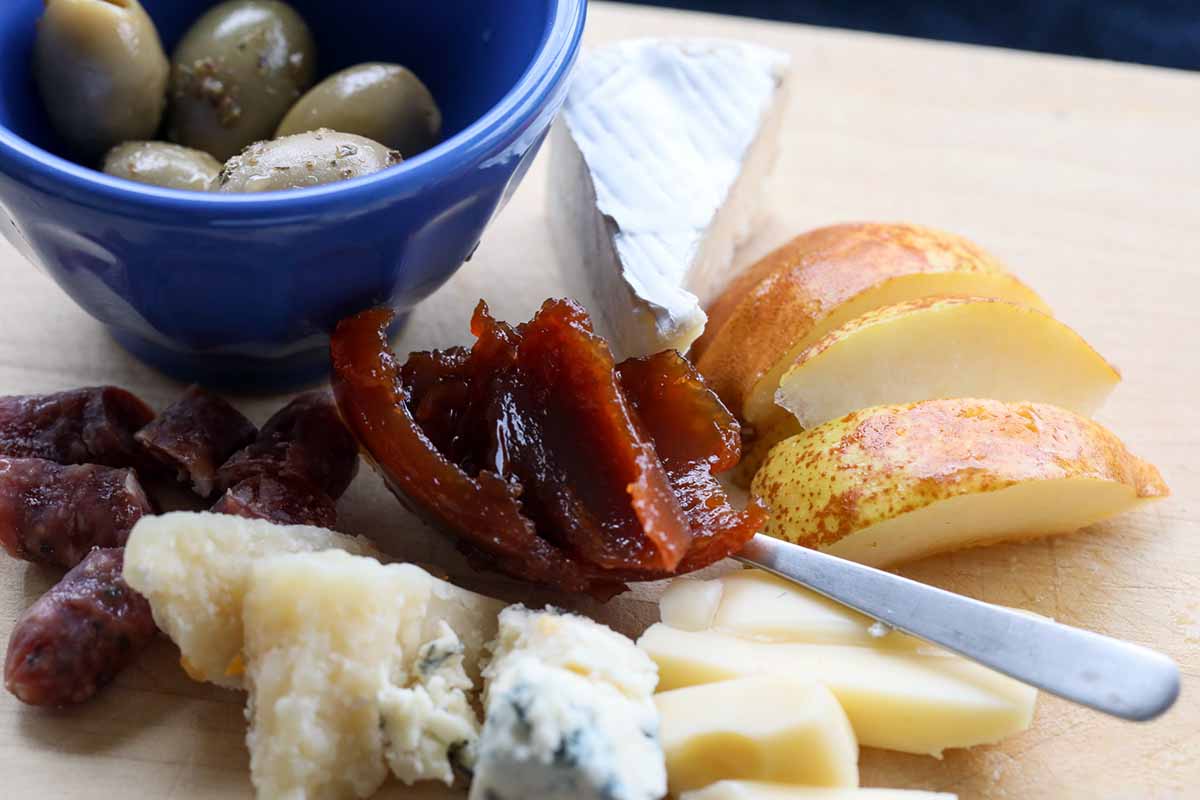
The fruits retain their texture and flavor well, so they hold up to cooking with strong flavors.
Use them in a radicchio and walnut salad or try them in our sister site Foodal’s herb roasted tenderloin pork with pears recipe.
Quick Reference Growing Guide
| Plant Type: | Deciduous fruit tree | Flower/Foliage Color: | White/green (yellow in fall) |
| Native to: | Asia | Maintenance: | Moderate |
| Hardiness (USDA Zones): | 4-9 | Tolerance: | Freezing temperatures, some drought, average soil |
| Bloom Time/Season: | Spring (flowers), fall (fruit) | Soil Type: | Loose, organically-rich |
| Exposure: | Full sun | Soil pH: | 6.0-7.0 |
| Time to Maturity: | 3-5 years (fruiting) | Soil Drainage: | Well-draining |
| Spacing: | 15 feet | Attracts: | Birds, pollinators |
| Planting Depth: | Depth of root system (transplants) | Companion Planting: | Alliums, basil, garlic, nasturtium, mint, tansy |
| Height: | 20 feet | Family: | Rosaceae |
| Spread: | 20 feet | Genus: | Pyrus |
| Water Needs: | Moderate | Species: | Communis |
| Common Pests and Disease: | Aphids, codling moths, mites, pear psyllid, scale; Armillaria, fireblight, leaf spot, scab | Cultivar: | Bosc |
‘Bosc’ is the Boss of Pears
When certain cultivars have remained popular for centuries, you know they must have something good going for them.
In the case of ‘Bosc,’ it’s numerous good things! The flavor and appearance make them appealing both in the fruit bowl and the charcuterie board.
I’m so excited for you to start enjoying your ‘Bosc’ fruits. How will you use yours? Have any recipes you want to share? Leave it all there in the comments section below.
And for more information about growing pears, have a read of these guides next:
